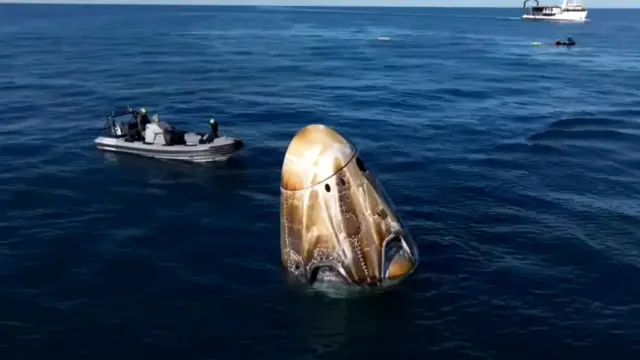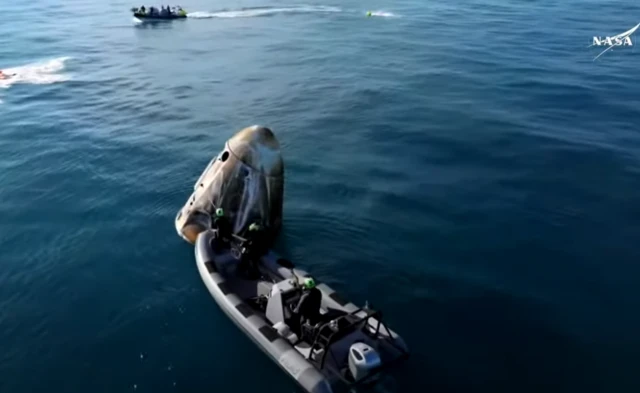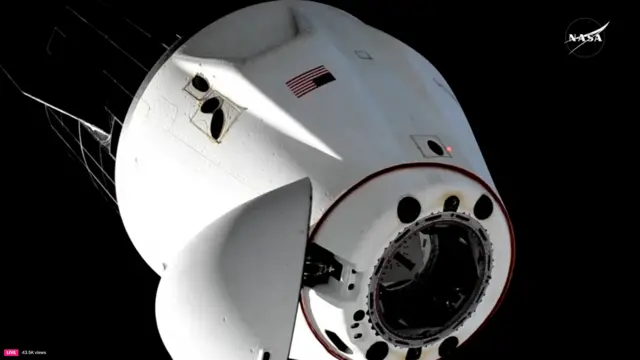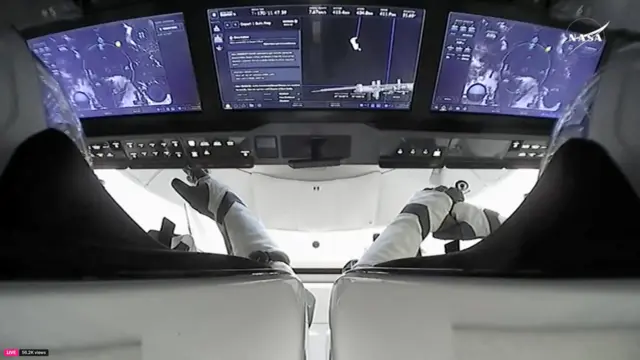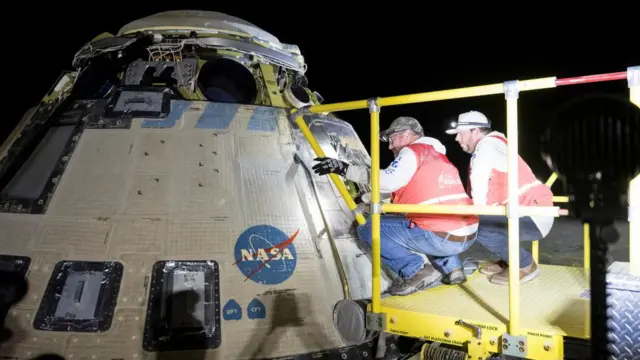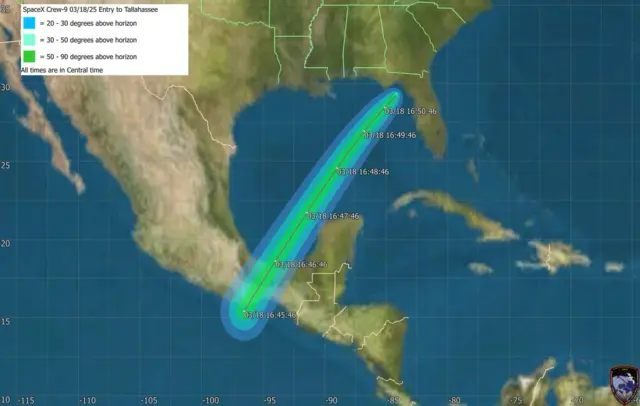3,2,1... splashdown! Relive the moment the Dragon capsule landspublished at 22:14 GMT 18 March
After an almost 17-hour journey back home to planet Earth, Suni and Butch have successfully landed.
Relive the splashdown moment in the video below:
Astronauts splash down on Earth after extended stay in Space

